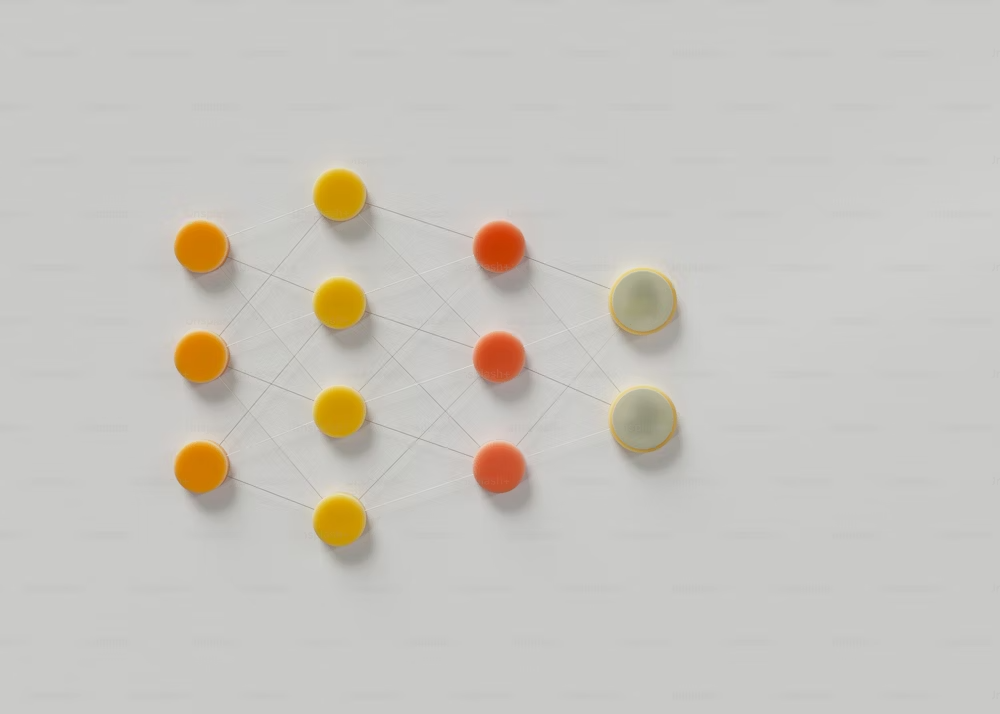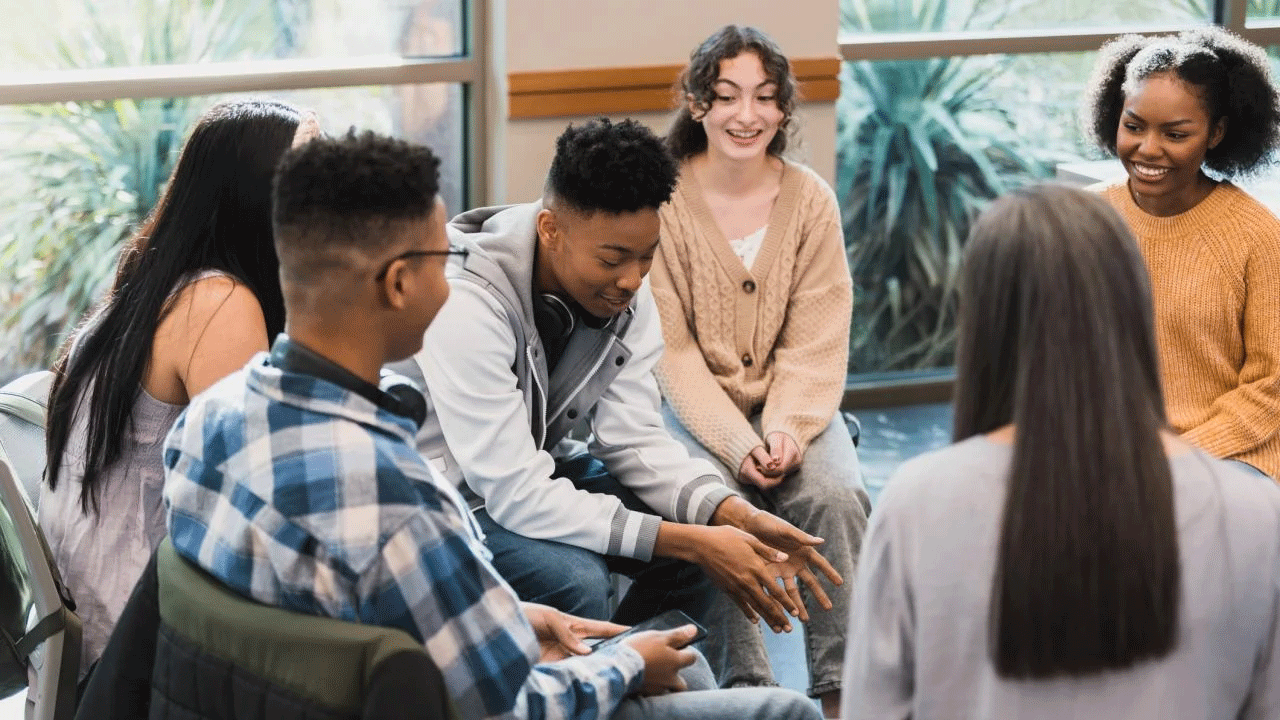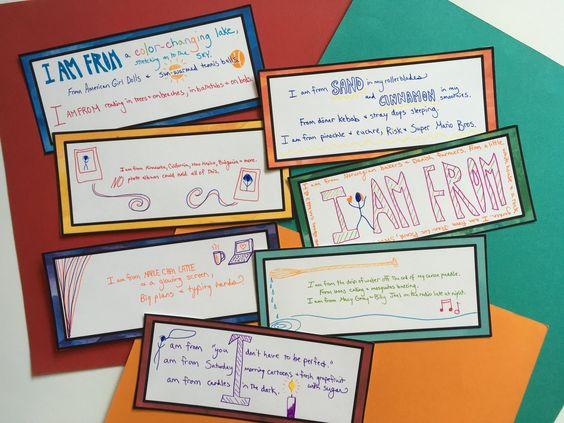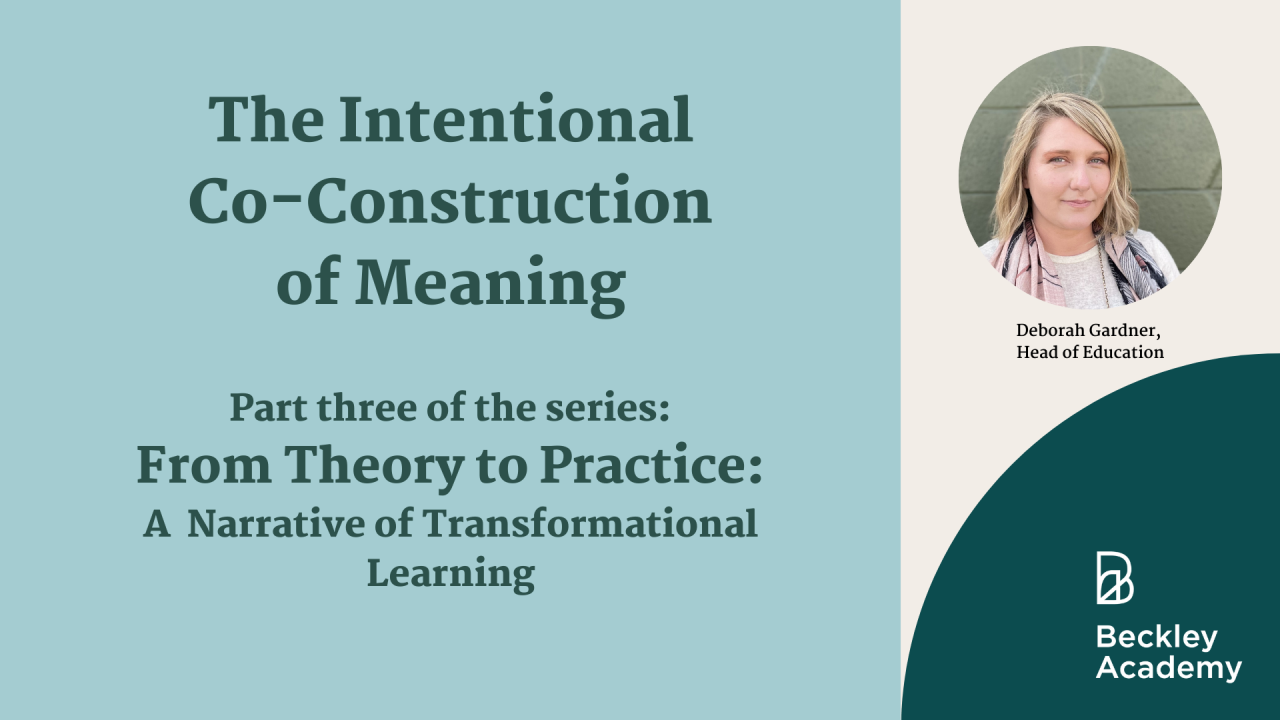Learning happens in relationship — relationship to self, others, and the world. We learn through interactions with others, the external world, and our internal world. Knowledge is neither fixed nor objective, but shaped and negotiated through social interactions and conversations.
From this holistic lens, learning can be understood as reflective, reflexive, and experiential.
- Learning reflects the conceptual knowledge of society.
- Learning is reflexive because it happens in response to something.
- Learning is experiential because it involves actively engaging with experiences and actively constructing knowledge from those experiences.
The Construction of Collective Concepts: Statistical Learning
Let’s zoom out and consider how we learn concepts. Concepts are the building blocks of knowledge.
“Without concepts, you’d experience a world of ever-fluctuating noise. Everything you ever encounter would be unlike everything else” (Barrett, 2015, p. 85).
We are inundated with external stimuli in every moment. To make meaning of what would otherwise be constant noise, we rely on the categorization of stimuli into categories according to similar attributes, which form concepts.
Statistical learning is the ability to learn from patterns- it is a co-creative experience that happens unintentionally. Our brains use statistical learning to create concepts (Barrett, 2015). Statistical learning begins in childhood and continues through adulthood (Sherman et al., 2020). It happens when we are exposed to stimuli in various contexts and infer meaning. Unlike learning that engages the reward system, statistical learning is not modulated by rewards; it happens automatically and outside of conscious awareness (Sherman et al., 2020).
Over time, our brains create a prototype for a stimulus that is the conceptual best example. All other similar stimuli are interpreted based on this prototype. The concepts related to a prototype don’t have hard edges; rather, they are malleable and can adapt to similar stimuli.
Let’s think about soft drinks – any type of sugary, fizzy drink. A small percentage of you will know these drinks as soft drinks. More likely, you call these drinks soda, pop, or coke, depending on where you live. Let’s zoom in on those of us who call soft drinks coke. A soft drink does not have to be a Coca-Cola product to be called a coke in the US South. In Georgia, for example, a Sprite is called a coke. If you visit a restaurant in Georgia, where Coca-Cola originated, and ask for a coke, the waitstaff will likely ask, “Sure, what kind of coke do you want?” And you would have to say coke again to get a Coca-Cola Classic soft drink. Most Georgians’ concept of coke includes not only Coca-Cola but all the other soft drinks that exist. In the Northeast, though. A soft drink is likely called a soda. Several subcategories exist within the concept of soda, like caffeinated, non-caffeinated, or by brand name, such as Pepsi products, Coca-Cola products, etc.
The point is that stimuli need not be exact to enact prior knowledge, Several internal and external factors determine whether a stimulus fits within the bounds of a concept, and if it doesn’t, it ends up in another category or a subcategory. In the example, you can see how the edges of our conceptual prototypes are influenced by culture. The concept is updated in the moment.
Statistical learning has interesting implications in education because it will reflect the semantic knowledge of the dominant culture. Embedded within the historical and societal constructs are broader cultural messages that are subconsciously learned.
This means that even when students study alone, they build upon knowledge and concepts heavily influenced by society’s norms.
A Balance of Prediction and Present Moment Experience: Intentional Learning
Our brains make predictions based on statistical learning, instinct, and other lived experiences. In theory, the more experience we have, the better our predictions become.
“Through prediction and correction, your brain continually creates and revises your mental model of the world. It’s a huge, ongoing simulation that constructs everything you perceive while determining how you act.” (Barrett, 2015, p. 62)

But we can’t rely on predictions alone. When we want to change a habit, affective state, or belief that no longer serves us, we must balance prediction with mindfulness of our present moment experience. Intentional learning involves a balance of prediction (based on our conceptual understandings) and sensory input from the present moment. In this way, learning is relational, drawing from past experiences, and reflexive, adapting to new stimuli.
This means that a good portion of the learning experience occurs outside of conscious awareness.
How can we teach to the part of learning that is outside of conscious awareness?
In the following passage, we will explore psychological safety, balancing power in the classroom, and how to engage in the intentional co-construction of meaning through generative dialogue, counter-storytelling, and identity texts.
Psychological Safety
Co-construction in the classroom requires psychological safety. Safety begins with an understanding of trauma.
Trauma-informed Classroom
To create psychological safety in the classroom for the hundreds of millions of children who live with daily trauma, such as poverty, interpersonal violence, oppression, racism, and others, we must apply a trauma-informed lens. According to the World Health Organization (WHO) (2022), one billion children around the world experienced some form of trauma in a year-long-period, and, as noted by the Urban Child Institute (2012), these experiences can have lasting effects on student development when educators misunderstand them. Additionally, learners today experience climate anxiety, resource depletion, and the relational complexities of navigating social media (UNESCO et al., 2012).

The educator’s job is to prepare learners for a journey– one that will be perilous and rewarding, and full of grief, joy, and moments of uncertainty.
Join the Beckley Academy Mailing List
At Risk Populations
Students with Learning Differences
Traditional teaching methods risk retraumatizing students, eliciting shame, and otherwise challenging already at-risk learners. My student population consisted of learners with numerous learning differences, such as ADHD, Asperger’s, dyslexia, dysgraphic, and other cognitive issues with memory retrieval, comprehension, and verbal expression. Many of the students I taught had failed out of public school or had been asked to leave a school because of behavior or academic issues. Traditional reading and writing activities elicited shame, avoidance, and dissociation in my student population, due to predictions based on their past experiences. Understanding my students’ predictive models for reading and writing allowed me to see their behaviors as protective functions, rather than as disinterest or defiance.
Migrant Students
Migrant students, who have often left their home countries because of traumatic experiences of war, poverty, or oppression, are another population at risk of retraumatization from traditional teaching methods. Often migrant children enter parts of the country that hold deeply-seated prejudice and racist beliefs (Tamer, 2014). Their transition into the US school system is extremely challenging, as they navigate racism along with being the new kid immersed in a new culture, and often without a strong family support system at home (Cardoza, 2019). To compound the difficulties that migrant children face, the majority of classes in the US are conducted in English, with little acceptance of multilingual communication (Tamer, 2014). Because of this, migrant children often feel a sense of alienation, a lack of belonging, and low self-esteem. They begin to view their first language (L1) as a barrier to learning, as a deficit, and associate shame with their cultural identity (Joffe-Walt, 2020). Again, trauma responses like dissociation, fight, or flight, may be interpreted as behavioral issues, leading to disciplinary actions and further alienation from peers and teachers.
BIPOC Students
Racism and oppression place tremendous burdens on children in and beyond the classroom. As Georgetown University law professor Charles R. Lawrence III (2006) elucidates, “Not only do we teach children in different schools, separated by race, class, and how much money we spend; we also teach them differently. We offer different content, we speak to them differently, and we listen differently, too. We have different expectations, aspirations, and goals. We are educating them for different futures. We send them different messages about their value to us, to the world, and to themselves” (pp. 712-713). This impacts Black American students in the United States, particularly. In a study of stereotype threat, Black children underperformed white children on tests when they are preceded with racial stereotyping (though their knowledge levels were equal) (Steele, 1997). Other implications are even more insidious and operate implicitly. Racial stereotyping, racism, and oppression create ongoing trauma for Black, Indigenous, and People of Color (BIPOC) which lead to higher levels of anxiety and stress, physical illness and mental illness, such as structural dissociation (Menzies, 2019).
Reframing Undesirable Behavior
Understanding behavior through the lens of trauma illuminates the neurobiological function of behavior and helps teachers develop empathy.
Trauma often shows up in class as what many traditionally trained educators would deem undesirable behaviors, like a lack of engagement or acting out. When educators do not recognize such behaviors as trauma responses, students often receive consequences like detention or even suspension. However, research shows that “…[r]epeatedly suspending students who do not have the necessary skills to behave appropriately in school will not result in more desirable behaviors” (Dupper, 2010, p.17). Rather, learners disciplined in this way “…often return to school with the same or worse behaviors following a suspension” (Slee, 1999, as cited in Dupper, 2010, p. 17). When educators understand how the nervous system responds to trauma, they can help students build a repertoire of regulatory resources for difficult times. For example, in a program developed by Upstream (2019), learners practice tracking signs of stress and implement coping skills, such as box breathing and grounding techniques, that can help them stay engaged in class and manage stress outside the classroom.
The Amygdala Alarm
The amygdala assesses safety, danger, and life-threat; as such, it “controls emotions and aggression, and assesses harmfulness of sensory inputs” (Schunk, 2012, p. 38). Stephen Porges termed this process of assessing safety, danger, and life-threat neuroception. Neuroception happens beneath our conscious awareness. In the neurological state of social engagement, we can assess safety, danger, and threat more accurately. We have enough safety in this state to try out novel things, take risks, and optimally learn. However, as soon as we neurocept danger or threat, bottom-up hijacking occurs. This means that the lower parts of the brain — like the brain stem — take over, and the neocortex and higher levels of the brain go offline, making learning new information difficult (Ogden & Fisher, 2015).
Child psychologist Mona Delahooke explains how understanding how we “neurocept” safety allowed her to let go of blame. She states: “Porges’s Polyvagal Theory shows that the drive to avoid threat and secure safety is what guides human behavior. As such, what we often label as “bad” behaviors are actually fight-or-flight behaviors, adaptations of the ANS, developed to protect human beings from perceived harm” (n.d.).
Creating a classroom in which students feel safe is paramount to learning. When students have experienced trauma, school can be especially re-triggering. For example, for students with learning disabilities who have many past experiences of failing out of school, the mere act of taking a test can create so much anxiety that they perform poorly and are not able to access or articulate knowledge. Porges (2019) notes that when students and teachers neurocept safety in the classroom, it “optimizes behavior by turning off biobehavioral defenses” (i.e., fight, flight, freeze responses), “increases spontaneous social behavior and opportunities to learn,” and helps us to understand the very logical reasoning behind our “positive and negative [valence] feelings and behaviors of individuals when interacting.”
Safety is Subjective and Diverse
Safety is not a singular concept.
To meet the needs of diverse learners in the classroom, we must acknowledge that safety is not a singular concept. According to Walton and Cohen (2007), the notion of safety is not a unified concept. Their research reveals that psychological safety, heavily influenced by the dominant culture’s norms, is not inherent to every student. Similarly, Garran and Rasmussen (2014) argue that safety in the classroom is not a singular idea, but rather, it is a subjective experience influenced by issues of power and privilege (p. 402).
Teacher-student relationship
The teacher-student relationship is central to psychological safety in the classroom. Decades of research has shown that when a teacher believes in their student, their students believe in themselves and, therefore, achieve higher standards (Ellison, 2015). Conversely, when teachers do not believe in their students, those students lose self-confidence and motivation (Ellison, 2015). Self-assessment and personal-professional development are essential to ensuring that a teacher conveys the belief that each of their students has the ability to learn. No one is free from implicit biases that past experiences and social location have shaped. Taking the time to notice and understand how and why biases show up can help a teacher to interrupt and correct them in the classroom.
Professional Development
Teachers and learners are in a reflexive relationship. From this perspective, a strengths-based approach to learning and learning differences is critical. Rosenthal explains that when we expect certain behaviors from people, we treat them differently, affecting their behavior (as cited in Ellison, 2015). Robert Pianta, dean of the Curry School, explains how a teacher’s implicit biases can impact students’ “behaviors and classroom dynamic. For example, if a teacher holds a belief that “boys are disruptive and need to be managed” they may mistake eagerness to participate in boys (like jumping up and saying, “‘I know the answer!'” as an undesirable classroom behavior that needs to be managed” (as cited in Ellison, 2015). Pianta goes on to say that this action is “likely to make the boy frustrated and emotionally disengaged” and may even lead to escalated behaviors (as cited in Ellison, 2015). Our ability to create a safe learning environment in which diverse students are viewed as assets will encourage students to believe in themselves, which is half of the battle. As we know, believing in our students is the other half of the battle. Echoing the sentiments of Samuels (2018), teachers must have access to meaningful and ongoing professional development opportunities to effectively promote diversity and inclusivity within their classrooms.
Researcher, Rubie Davies, encourages teachers to record themselves in the classroom to help them notice how their somatic and nonverbal communication contributes to the dialogue about student achievement (Ellison, 2015). Sometimes, the somatic narrative can reveal implicit meanings that teachers may not be aware of. The teacher-student relationship begins with the teacher’s commitment to a growth mindset for themselves and their students.
Balancing Power in the Classroom: From Power Over to Power With
The construction of knowledge doesn’t happen in a vacuum. It happens in a dynamic relationship with others, particularly within a socio-cultural context. The power dynamics between the teacher and student can significantly impact learning in the educational setting. Traditional education has often operated from a “power over” dynamic, where the teacher is seen as the authority figure, and the students are expected to comply and follow instructions. In this dynamic, the teacher holds and dispenses the knowledge to the students. However, this approach can limit the students’ agency and engagement in their own learning process.
A more effective dynamic is one of “power with,” where the teacher and students engage in a co-construction of meaning. This means that the teacher recognizes the students as active agents in their own learning and values their contributions to the learning process. This also creates a safe and inclusive learning environment where students feel comfortable sharing their thoughts and ideas without fear of judgment or punishment. In this collaborative dynamic, the teacher and students learn from each other and construct meaning together.
Intentional Co-Construction of Meaning: Learning, Unlearning, and Relearning
Knowledge is not static. Even what we might consider scientific truth is meant to evolve as we gain new understandings.
In a traditional education model, knowledge is often presented as a fixed and final truth, with students expected to simply absorb and reproduce it. However, co-constructing meaning acknowledges that knowledge is constantly negotiated and shaped through social interactions and personal experiences. This approach to learning values critical thinking, active participation, and diverse perspectives. It also empowers learners to take ownership of their learning and actively participate in the co-construction of meaning. Through dialogue and collaboration, learners can challenge and build upon each other’s understandings, creating a richer and more nuanced understanding of the topic at hand and building important skills such as communication, empathy, and respectful debate.
Constructivism
Learners are not empty vessels waiting to be filled, but rather active organisms seeking meaning. (Driscoll, 2004, as cited in Brown & Green, 2016, p. 376).
In a constructivist approach, the teacher facilitates the learning process rather than simply transmitting information to the students. Students are encouraged to actively engage with the material, relate it to their prior knowledge and experiences, and collaboratively construct meaning together. This emphasis on active participation and collaboration makes constructivism central to the co-creation of meaning in the classroom.
The constructivist classroom is a dynamic and interactive learning environment that recognizes each student’s unique perspectives and backgrounds. This diversity of perspectives is valuable as students work together to make sense of new information and ideas. Through discussions, group projects, and other activities, learners can construct their understanding of the material while learning from their peers.
Three Strategies for Co-Construction of Meaning
Generative Conversation
Paulo Freire (2017; 1970) advocated for teachers to use dialogue and critical questioning, which he termed generative conversation, to allow students to move beyond limit situations—in other words, expand their consciousness beyond the limitations of prescribed and oppressive reality. Generative conversation is a type of dialogue in which participants can explore their own and others’ thoughts and beliefs, collaborate, and problem-solve through the exchange of ideas. According to Freire (2017; 1970), generative conversation is a way to promote emancipation from oppressive forces.
In generative conversation, individuals can move beyond the traditional classroom structure and create a space where they are able to think critically and generate new knowledge.

Generative conversation relates to the co-construction of meaning as it emphasizes the importance of dialogue and collaboration in constructing knowledge. In this type of conversation, learners actively engage in questioning, sharing, and collaborative meaning-making. By promoting critical thinking and problem-solving through dialogue, generative conversation allows individuals to challenge traditional thinking and form new perspectives of reality. This aligns with co-construction, in which individuals are not just receiving information from an authority figure but actively constructing knowledge together.
Counter-storytelling
From the authentic dialogue that generative themes offer, teachers and students can participate in counter-storytelling, which is a “method of telling the story of those experiences that have not been told (i.e., those on the margins of society) and a tool for analyzing and challenging the stories of those in power and whose story is a natural part of the dominant discourse” (Solorzano & Yosso, 2020). Counter-storytelling creates value and gives a voice to those not included in the mainstream narrative. Not only are counter-narratives critical to the analysis, challenge, and transformation of existing belief systems, but they also help students to develop a voice, which is paramount to generativity (Miller et al., 2020).
Counter-storytelling, as a method of telling the stories of diverse groups, is a powerful tool for the co-construction of meaning. In counter-storytelling, individuals can challenge dominant narratives and contribute their own experiences and perspectives, thus expanding the collective understanding of a topic or issue. Through generative themes and authentic dialogue, these students can engage in counter-storytelling, sharing their own stories and perspectives. This allows for a deeper understanding of the topic and values the diverse experiences and voices of all students. Moreover, counter-storytelling encourages critical thinking and analysis, as students actively challenge and question dominant narratives. This promotes the co-construction of meaning as students are not simply accepting information or knowledge from a single source, but actively engaging with it and contributing to its construction.
Identity Texts
To celebrate diverse identities, elicit prior knowledge, make learning accessible, and support self-compassion and empathy, educators can use identity texts in their classrooms. Students write, draw, or perform identity texts informed by their diverse identities, experiences, and perspectives (Cummins et al., 2006, p. 5). These texts can be tangible, such as expositions, autobiographies, and poems, or intangible, such as performances and role plays.

The content of identity texts may draw from personal or family history, culture, language, and skills. Identity texts provide a platform to articulate complex identities, allowing readers to gain an understanding of one’s life and experiences. Cummins et al. describe those texts being shared with relatives or friends in the students’ countries of origin (p. 589), which conveys the value and belonging of the language of origin. Identity texts foster curiosity about identity, language, and culture in the classroom. This co-creation of meaning allows for a richer and more nuanced understanding of complex concepts, as learners can draw upon a variety of experiences and knowledge.
Transformative education requires the co-construction of meaning. Knowledge is not static; it is constantly negotiated and shaped through social interactions and experiences. Through strategies such as generative conversation, counter-storytelling, and identity texts, learners can actively engage in the co-construction of meaning, challenging dominant narratives and expanding their understanding of the world. This approach values diverse perspectives and brings awareness to the inherent power dynamics in the classroom, creating a safe and inclusive learning environment. By actively engaging in the co-construction of meaning, learners can develop critical thinking skills, empathy, and a deeper understanding of themselves and the world around them.
References
Barrett, L. F. (2017). How Emotions Are Made: the secret life of the brain. Houghton Mifflin Harcourt.
Cardoza, K. (2019, April 9). How Schools Are Responding to Migrant Children. Education Week. https://www.edweek.org/leadership/how-schools-are-responding-to-migrant-children/2019/04.
Cummins, J., Bismilla, V., Chow, P., Cohen, S., Giampapa, F., Leoni, L., …Sastri, P. (2006). ELL students speak for themselves: identity texts and literacy engagement in multilingual classrooms. https://www.researchgate.net/publication/255580913_ELL_Students_Speak_for_Themselves_Identity_Texts_and_Literacy_Engagement_in_Multilingual_Classrooms_1
Delahooke, M. (n.d.). How I Came to Rethink Children’s Challenging Behaviors: Doing away with the blame game. Psychotherapy Networker. https://www.psychotherapynetworker.org/article/how-i-came-rethink-childrens-challenging-behaviors/#:~:text=I%20encouraged%20using%20relational%20joy,safe%2C%20valued%2C%20and%20loved.
Dupper, D. R. (2010). A new model of school discipline: Engaging students and preventing behavior problems. Oxford University Press.
Ellison, K. (2015, October 29). Being Honest About the Pygmalion Effect. Discover: Science for the Curious . http://discovermagazine.com/.
Freire, P. (2017). Pedagogy of the Oppressed. London: Penguin Classics. (Original work published 1970 by The Continuum Publishing Company).
Garran, A. & Rasmussen, B.M. (2014). Safety in the Classroom: Reconsidered, Journal of Teaching in Social Work, 34:4, 401-412, DOI: 10.1080/08841233.2014.937517
Joffe-Walt, C. (2020, July 30). The book of statuses (No. 1) [Audio podcast episode]. In Nice White Parents. Serial Productions and the New York Times. https://www.nytimes.com/2020/07/23/podcasts/nice-white-parents-serial.html
Lawrence, C. R. (2006). Who Is the Child Left Behind? The Racial Meaning of the New School Reform. Georgetown Law Faculty Publications and Other Works., 341. https://doi.org/https://scholarship.law.georgetown.edu/facpub/34
Miller, R., Liu, K., & Ball, A. F. (2020). Critical counter-narrative as transformative methodology for educational equity. Review of Research in Education, 44(1), 269–300. https://doi.org/10.3102/0091732×20908501
Ogden, P., & Fisher, J. (2015). Sensorimotor psychotherapy: Interventions for trauma and attachment. New York: W.W. Norton & Company.
Porges, S. (2019, September). Social Connectedness as a Biological Imperative: Implications of Polyvagal Theory in the Classroom. Address.
Potash, B. (2020, February 18). ‘I am from poems: identity text example” [Image]. Twitter. https://twitter.com/BetsyPotash/status/1229812000530020864
Samuels, A. J. (2018). Exploring culturally responsive pedagogy: Teachers’ perspectives on fostering equitable and inclusive classrooms. SRATE Journal, 27(1), 22-30. https://files.eric.ed.gov/fulltext/EJ1166706.pdf
Schore, A. N. (2009). Attachment trauma and the developing right brain: Origins of pathological dissociation. In 908695174 715537999 P. F. Dell & 908695175 715537999 J. A. O’Neil (Eds.), Dissociation and the dissociative disorders: DSM-V and beyond. New York: Routledge.
Schunk, D. H. (2012). Learning theories: An educational perspective (6th ed.). Pearson.
SDI Productions. (2022). ‘Multicultural students talking.’ [Image]. Used with permission. Retrieved September 15, 2021, from https://www.istockphoto.com/photo/young-man-is-honest-gm1383890727-443546983?searchscope=image%2Cfilm%2Csound.
Sherman, B. E., Graves, K. N., & Turk-Browne, N. B. (2020). The prevalence and importance of statistical learning in human cognition and behavior. Current opinion in behavioral sciences, 32, 15–20. https://doi.org/10.1016/j.cobeha.2020.01.015
Solorzano, D. G., & Yosso, T. J. (2020). Maintaining Social Justice Hopes within Academic Realities: A Freirean Approach to Critical Race/LatCrit Pedagogy. Denver Law Review, 78(4). https://digitalcommons.du.edu/dlr/vol78/iss4/7/
Tamer, M. (2014, December 11). The Education of Immigrant Children. Usable Knowledge: Relevant research for today’s educators. https://www.gse.harvard.edu/news/uk/14/12/education-immigrant-children.
United Nations Educational, Scientific, and Cultural Organization (UNESCO). (2012). Education for sustainable development: Sourcebook. https://sustainabledevelopment.un.org/index.php?page=view&type=400&nr=926&menu=1515
Upstream. (2019). Taking stock of our stress. [Printed handout]
The Urban Child Institute. (2012). Data Book Vii: The state of children in Memphis and Shelby County.
Walton, G. M., & Cohen, G. L. (2007). A question of belonging: Race, social fit, and achievement. Journal of Personality and Social Psychology, 92(1), pp. 82-96. https://www.goshen.edu/wp-content/uploads/sites/2/2016/08/WaltonCohen2007.pdf
WHO. (2022). Violence against children. https://www.who.int/news-room/fact-sheets/detail/violence-against-children
More About This Series
A former student of mine reached out to me through social media. She wanted to let me know that she decided to pursue a career in social justice law in part because of the experiences she had in my English class over a decade ago. Rather than swell with pride— okay, I did shed a happy tear or two— I started wondering, “What’s the recipe for education that is engaging enough to change lives?”
My educational background in art, literature, and social justice, and my diverse professional experiences in education, first teaching students learning differences, and in the last decade, building courses in psychology and mental health modalities for post-grad learners, have illuminated several theories that, applied skillfully, engage learners, making learning meaningful, and create just the right amount of challenge for diverse learners.
In this five-part newsletter series, we will cover topics of theory and practice related to education and mental health. The series will culminate in a community discussion of our theory of education for psychedelic-assisted therapy at Beckley Academy.
All are welcome! Whether you are a learner, educator, or theorist, we’d love to hold space with you.



